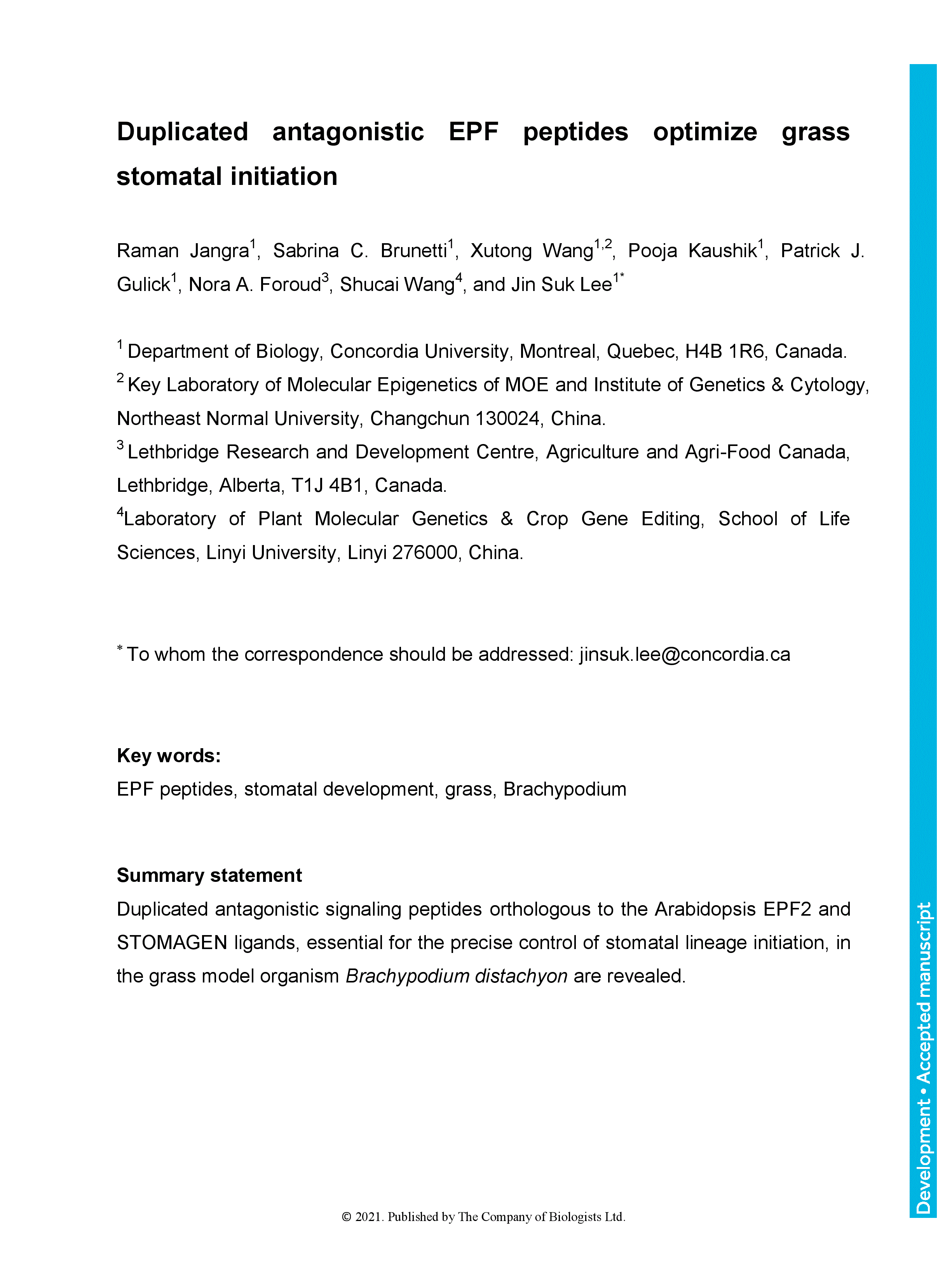Peptide signaling has emerged as a key component of plant growth and development, including stomatal patterning, which is critical for plant productivity and survival. Although exciting progress has been made in understanding EPIDERMAL PATTERNING FACTOR (EPF) signaling in Arabidopsis, the mechanisms by which EPF peptides control different stomatal patterns and morphologies in grasses is poorly understood. Here, by examining expression patterns, overexpression transgenics, and cross-species complementation, the antagonistic stomatal ligands orthologous to Arabidopsis AtEPF2 and AtSTOMAGEN/AtEPFL9 peptides were identified in Triticum aestivum(wheat) and the grass model organism Brachypodium distachyon. Application of bioactive BdEPF2 peptides inhibited stomatal initiation, but not the progression or differentiation of stomatal precursors in Brachypodium. Additionally, the inhibitory roles of these EPF peptides during grass stomatal development were suppressed by the contrasting positive action of the BdSTOMAGEN peptide in a dose-dependent manner. These results not only demonstrate how conserved EPF peptides that control different stomatal patterns exist in nature but also suggest new strategies to improve crop yield through the utilization of plant-derived antagonistic peptides that optimize stomatal density on the plant epidermis.
Duplicated antagonistic EPF peptides optimize grass stomatal initiation
- Award Group:
- Funder(s): Natural Sciences and Engineering Research Council of Canada
- Funder(s):
- Award Group:
- Funder(s): Alberta Innovates Bio Solutions
- Funder(s):
Currently Viewing Accepted Manuscript - Newer Version Available
Raman Jangra, Sabrina C. Brunetti, Xutong Wang, Pooja Kaushik, Patrick J. Gulick, Nora A. Foroud, Shucai Wang, Jin Suk Lee; Duplicated antagonistic EPF peptides optimize grass stomatal initiation. Development 2021; dev.199780. doi: https://doi.org/10.1242/dev.199780
Download citation file:
Advertisement
Call for papers: Uncovering Developmental Diversity

Development invites you to submit your latest research to our upcoming special issue: Uncovering Developmental Diversity. This issue will be coordinated by our academic Editor Cassandra Extavour (Harvard University, USA) alongside two Guest Editors: Liam Dolan (Gregor Mendel Institute of Molecular Plant Biology, Austria) and Karen Sears (University of California Los Angeles, USA).
Choose Development in 2024

In this Editorial, Development Editor-in-Chief James Briscoe and Executive Editor Katherine Brown explain how you support your community by publishing in Development and how the journal champions serious science, community connections and progressive publishing.
Journal Meeting: From Stem Cells to Human Development

Register now for the 2024 Development Journal Meeting From Stem Cells to Human Development. Early-bird registration deadline: 3 May. Abstract submission deadline: 21 June.
Pluripotency of a founding field: rebranding developmental biology

This collaborative Perspective, the result of a workshop held in 2023, proposes a set of community actions to increase the visibility of the developmental biology field. The authors make recommendations for new funding streams, frameworks for collaborations and mechanisms by which members of the community can promote themselves and their research.
Read & Publish Open Access publishing: what authors say

We have had great feedback from authors who have benefitted from our Read & Publish agreement with their institution and have been able to publish Open Access with us without paying an APC. Read what they had to say.



